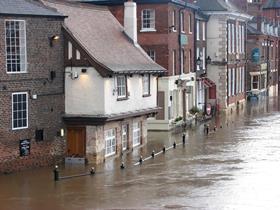Chief executive warns changes ’can make it more difficult for water to be absorbed’
UK homeowners are making the switch to artificial lawns despite being unaware of the floods risks, according to new research by Aviva.

According to figures by the insurer, a fifth (21%) of residents have already replaced or plan to switch their natural lawn with artificial grass, while a further 19% would consider making the swap.
However, just under half of UK residents (44%) believe artificial grass has no impact on flood risk and 9% think it can actually help to reduce the risk.
Aviva warned that artificial grass can make it more difficult for water to be absorbed, which could result in more flooding.
Jason Storah, chief executive of UKGI at Aviva, said: “At this time of year, many of us are thinking about making changes to our homes and outside spaces. Whilst it can be tempting to replace a garden with low maintenance driveways or artificial grass, these changes can make it more difficult for water to be absorbed.
”At times of heavy rain in urban areas, drains can rapidly become overwhelmed if the water cannot be absorbed, causing flooding outside and in the home.”
Positive changes
Aviva gathered the data through two surveys in August 2023.
Read: Flood damage reported to insurer after storm nears £10m
Explore more sustainability stories here or discover other news content here
It also found that residents were making changes that had a positive impact on climate resilience.
For example, one in nine (11%) have changed their garden into a wildflower meadow and 13% plan to do so in the future.
And almost a fifth (19%) have already or plan to switch their driveway to a garden with plants and flowers.
Storah added: “Even the smallest of planted or permeable spaces can help make a difference. Climate-ready gardens can play an important role in helping to mitigate the impact of heavy rain and reduce the chance of a flood from happening at home.
“Plants, lawns and flowers can not only help to absorb excess water, they can also bring other climate benefits, including improving biodiversity.
”Equally, plants in the right location can help to absorb heat during heatwaves or droughts. But it’s important to get ready for the future by locating the right plants in the right places. Some shrubs and trees can have extensive root systems, which may cause some soil types to shrink in periods of hot weather.”
Hosted by comedian and actor Tom Allen, 34 Gold, 23 Silver and 22 Bronze awards were handed out across an amazing 34 categories recognising brilliance and innovation right across the breadth of UK general insurance.



















































No comments yet